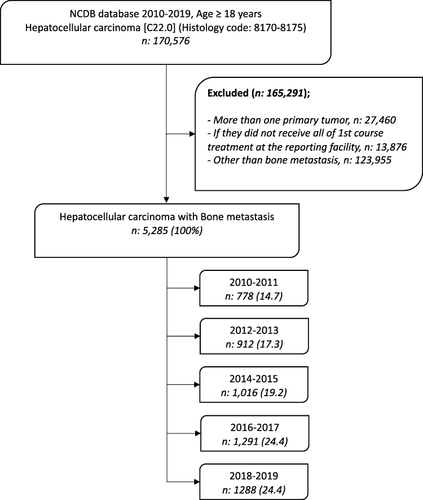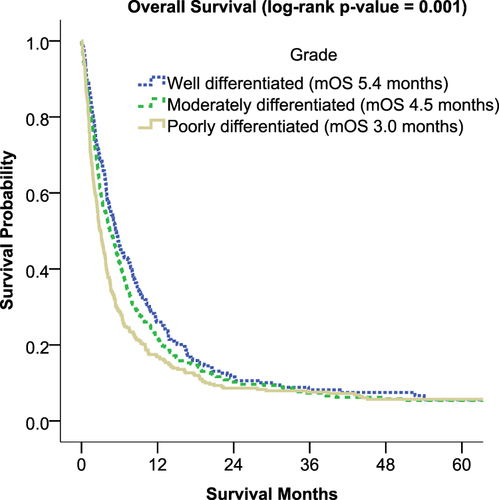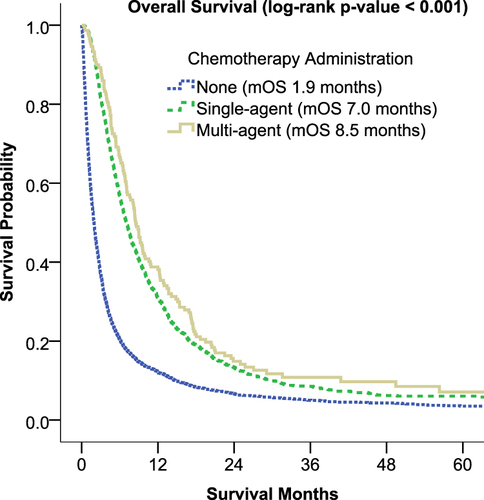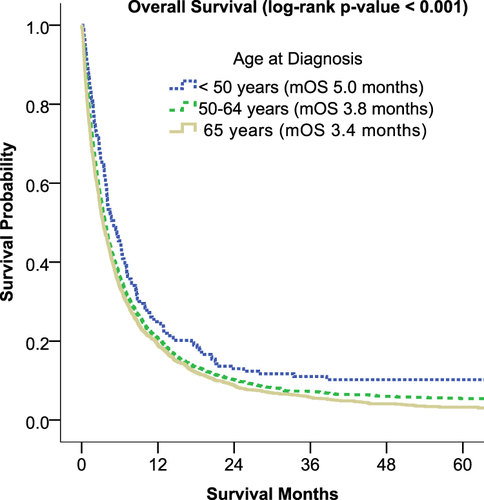Figures & data
Figure 1 Study flow chart. Patient selection criteria and the distribution based on year of diagnosis.

Table 1 Baseline Characteristics of Hepatocellular Carcinoma (HCC) Patients with Bone Metastasis
Figure 2 Overall survival of hepatocellular carcinoma patients with bone metastasis based on tumor grade. The classification of cancer grade into three categories is as follows: well-differentiated (grade I), moderately differentiated (grade II), and poorly differentiated (grade III). The Kaplan–Meier method was used to determine the median overall survival, with statistical significance set at p < 0.05.

Figure 3 Overall survival of hepatocellular carcinoma patients with bone metastasis based on treatment. The administration of chemotherapy was divided into three categories: none, single-agent, and multi-agent. Tyrosine kinase inhibitors, such as sorafenib, were included in chemotherapy, while immunotherapies such as atezolizumab were not included in the analysis. The Kaplan–Meier method was used to determine the median overall survival, with statistical significance set at p < 0.05.

Figure 4 Overall survival of hepatocellular carcinoma patients with bone metastasis based on age. The overall survival analysis was stratified by age, with patients classified into three categories: younger patients (< 50 years), middle-aged patients (50–64 years), and older adults (≥ 65 years). The median overall survival was determined using the Kaplan–Meier method, with statistical significance set at p < 0.05.

